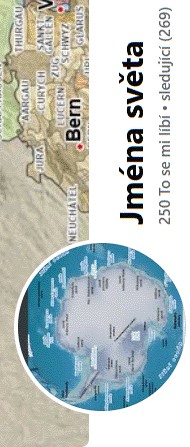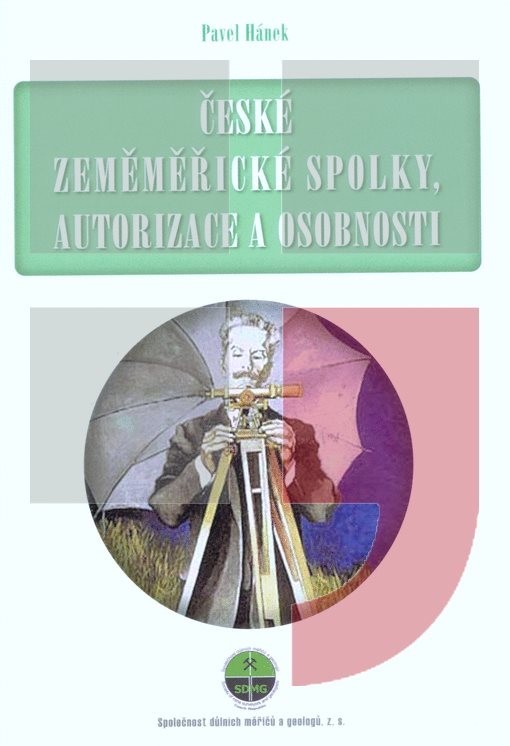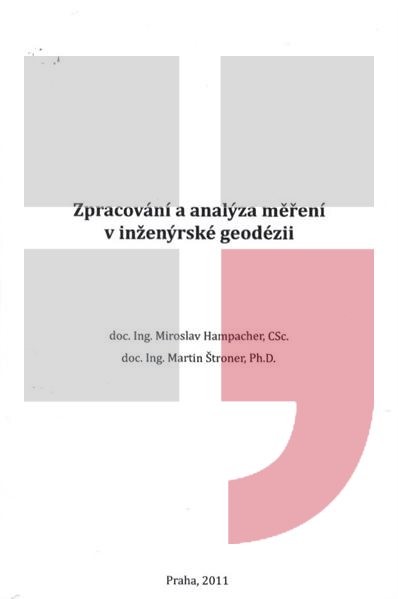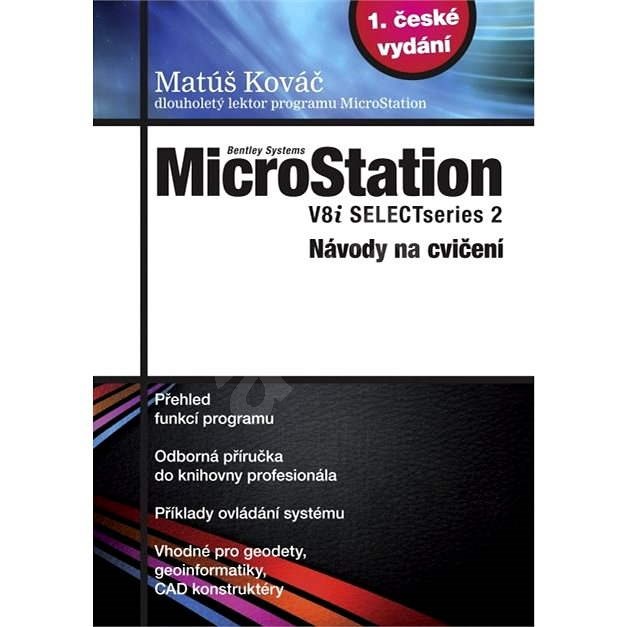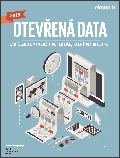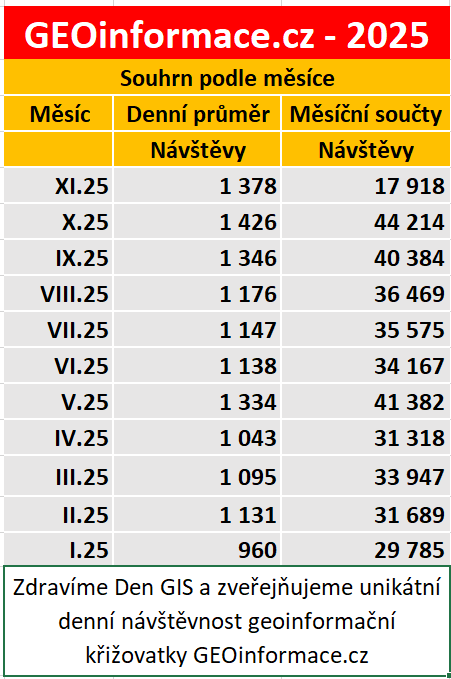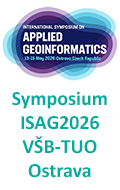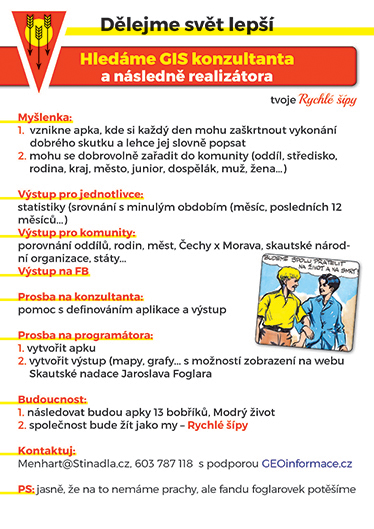zprávy
zdroje zpráv:"Cityworks OpX 1.0 Makes It Possible to Quickly Initiate Projects During Disasters and Emergency Management Events" by Susan Smith
9.8.2021 9:49 GISCafe.com Webcasts-WebinarsInterview with Lowell Ballard, Director of Geospatial Solutions, Timmons Group
9.8.2021 9:00 GISCafe.com Webcasts-WebinarsGearing up for third Sentinel-2 satellite
9.8.2021 8:40 ESA Observing the Earth
With the first Copernicus Sentinel-2 satellite in orbit since 2015 and the second since 2017, engineers are busy preparing the mission’s follow-on pair to eventually pick up the baton to supply images for a myriad of applications from food security to monitoring the decline of Earth’s ice. Slated for launch at the beginning of 2024, Sentinel-2C has just started a punishing five-month testing programme to ensure that it is fit for its life in space.
Hacknuli nás – omlouváme se na komplikace a SPAMy :-(
9.8.2021 8:28 GISportal.cz
Asi jste si minulý týden všiml, že se náš web i sociální sítě – Facebook i Twitter zbláznily. Někdo nás hacknul – nevím kdo ani proč, každopádně, když jste na chatě s EDGE v mobilu, tak toho moc dělat nejde 🙁 Všem se moc omlouváme za případné komplikace a snad se to zase nějakou dobu […]
The post Hacknuli nás – omlouváme se na komplikace a SPAMy :-( appeared first on GISportal.cz.
Nefunkčnost mapových služeb
9.8.2021 7:30 Ústecký kraj Oznamujeme, že k dnešnímu dni budou z důvodu upgradu ArcGis Serveru na novou verzi některé mapové služby nedostupné. Děkujeme za pochopení..Topcon Signs Agreement with DDK Positioning to Provide GNSS Hardware for Maritime Market
6.8.2021 22:20 GISCafe.com Webcasts-Webinars DDK Positioning will provide services and Topcon hardware to Oceaneering InternationalLIVERMORE, Calif. — (BUSINESS WIRE) — August 6, …
výběrové řízení na KP Velké Meziříčí
6.8.2021 10:31 ČÚZK /Urady/Katastralni-urady/Katastralni-urady/Katastralni-urad-pro-Vysocinu/O-uradu/Aktuality/vyberove-rizeni-na-KP-Velke-Meziricivýběrové řízení na KP Velké Meziříčí
6.8.2021 10:31 ČÚZK - předpisy a opatření Katastrální úřad pro Vysočinu zveřejnil novou aktualitu: Oznámení o vyhlášení výběrového řízení na služební místo odborný referent/vrchní referent v oddělení právní vztahy k nemovitostem Katastrálního pracoviště Velké Meziříčíodborný referent vrchní referent - právní vztahy k nemovitostem KP Velké Meziříčí
6.8.2021 9:23 ČÚZK /Urady/Katastralni-urady/Katastralni-urady/Katastralni-urad-pro-Vysocinu/Uredni-deska/Oznameni-a-jina-uredni-sdeleni/Volna-mista/DMS/odborny-referent-vrchni-referent-pravni-vztahy-kodborný referent vrchní referent - právní vztahy k nemovitostem KP Velké Meziříčí
6.8.2021 9:23 ČÚZK - volná místa Katastrální úřad pro Vysočinu Katastrální pracoviště Velké Meziříčí vypisuje výběrové řízení na místo odborný referent vrchní referent - právní vztahy k nemovitostem KP Velké Meziříčíodborný referent vrchní referent - právní vztahy k nemovitostem KP Velké Meziříčí
6.8.2021 9:23 ČÚZK - předpisy a opatření Katastrální úřad pro Vysočinu Katastrální pracoviště Velké Meziříčívypisuje výběrové řízení na místo
odborný referent vrchní referent - právní vztahy k nemovitostem KP Velké Meziříčí
Redistricting: A Guide for the GIS Community - New Publication from URISA
6.8.2021 9:00 GISCafe.com Webcasts-Webinars Des Plaines, IL (August 4, 2021) In support of the many redistricting efforts that are about to begin nationwide by the various state and …
Exhibit Floor Nearly Sold Out for Commercial UAV Expo Americas in September
6.8.2021 9:00 GISCafe.com Webcasts-Webinars 100+ best-in-class UAS solutions providers have booked booths for live eventPORTLAND, MAINE – USA, July 27, 2021 – Organizers …
Autodesk Extends Invitation to Join Financial Results Conference Call and Digital Investor Day
6.8.2021 9:00 GISCafe.com Webcasts-Webinars Second Quarter Fiscal 2022 Financial Results Conference Call to be Held Wednesday, August 25, 2021, 2:00 p.m. PTSAN FRANCISCO, Aug. 2, 2021 — …
AGI signs up as Locus Charter supporting organisation
6.8.2021 9:00 GISCafe.com Webcasts-Webinars 4 August 2021 -- The Association for Geographic Information (AGI) has pledged to promote the ethical use of location data by signing up as a …rada/odborný rada – obnova katastrálního operátu OKO0401
6.8.2021 8:40 ČÚZK /Urady/Katastralni-urady/Katastralni-urady/Katastralni-urad-pro-Plzensky-kraj/Uredni-deska/Oznameni-a-jina-uredni-sdeleni/Volna-mista/DMS/rada-odborny-rada-–-obnova-katastralniho-opera-(1)rada/odborný rada – obnova katastrálního operátu OKO0401
6.8.2021 8:40 ČÚZK - předpisy a opatření Katastrální úřad pro Plzeňský kraj Katastrální pracoviště Domažlicevypisuje výběrové řízení na místo
rada/odborný rada – obnova katastrálního operátu OKO0401
rada/odborný rada – obnova katastrálního operátu OKO0401
6.8.2021 8:40 ČÚZK - volná místa Katastrální úřad pro Plzeňský kraj Katastrální pracoviště Domažlice vypisuje výběrové řízení na místo rada/odborný rada – obnova katastrálního operátu OKO0401rada/odborný rada – obnova katastrálního operátu OKO0401, oddělení dokumentace KN
6.8.2021 8:24 ČÚZK - volná místa Katastrální úřad pro Plzeňský kraj Katastrální pracoviště Domažlice vypisuje výběrové řízení na místo rada/odborný rada – obnova katastrálního operátu OKO0401, oddělení dokumentace KNrada/odborný rada – obnova katastrálního operátu OKO0401, oddělení dokumentace KN
6.8.2021 8:24 ČÚZK - předpisy a opatření Katastrální úřad pro Plzeňský kraj Katastrální pracoviště Domažlicevypisuje výběrové řízení na místo
rada/odborný rada – obnova katastrálního operátu OKO0401, oddělení dokumentace KN
rada/odborný rada – obnova katastrálního operátu OKO0401, oddělení dokumentace KN
6.8.2021 8:24 ČÚZK /Urady/Katastralni-urady/Katastralni-urady/Katastralni-urad-pro-Plzensky-kraj/Uredni-deska/Oznameni-a-jina-uredni-sdeleni/Volna-mista/DMS/rada-odborny-rada-–-obnova-katastralniho-operatu-OOndas Completes Strategic Acquisition of American Robotics
6.8.2021 0:47 GISCafe.com Webcasts-Webinars Strengthens Leadership Position in Industrial Data Markets with Enhanced Connectivity and Remote Data CollectionNANTUCKET & MARLBOROUGH, Mass. …
Velodyne Lidar Reports Second Quarter 2021 Financial Results
6.8.2021 0:47 GISCafe.com Webcasts-Webinars 34 total active multi-year agreements as of August 1, 2021Reaffirmed full year 2021 revenue guidance of between $77 and $94 million
Second …
UAVita Systems Together With Nova Poshta Successfully Completed the World’s First Civilian Long Range Intercity Autonomous Drone Flight
6.8.2021 0:47 GISCafe.com Webcasts-Webinars KYIV, Ukraine — (BUSINESS WIRE) — August 5, 2021 —On July 29, 2021, UAVita Systems made history with a world aviation industry …
Topcon Signs Agreement with DDK Positioning to Provide GNSS Hardware for Maritime Market
5.8.2021 20:54 GISCafe.com Webcasts-Webinars DDK Positioning will provide services and Topcon hardware to Oceaneering InternationalLIVERMORE, Calif. — (BUSINESS WIRE) — August 5, …
2021 URISA Exemplary Systems in Government Award Recipients Announced
5.8.2021 18:26 GISCafe.com Webcasts-Webinars Des Plaines, IL (August 5, 2021) The URISA Exemplary Systems in Government (ESIG) awards were first presented in 1981 to recognize outstanding …Quanergy Expands Its Distribution of Industrial LiDAR Solutions with PowerMotion
5.8.2021 16:55 GISCafe.com Webcasts-Webinars SUNNYVALE, Calif. — (BUSINESS WIRE) — August 5, 2021 —Quanergy Systems, Inc., a leading provider of OPA-based solid state LiDAR …
ProStar Announces U.S. Listing on OTCQB Marketplace Under the Symbol MAPPF
5.8.2021 16:55 GISCafe.com Webcasts-Webinars VANCOUVER, British Columbia, Aug. 5, 2021 — (PRNewswire) — ProStar Holdings Inc. ("ProStar®" or the "the Company") (OTCQB: MAPPF) …Planet Signs Multi-Year, Multi-Launch Rideshare Agreement with SpaceX
5.8.2021 16:55 GISCafe.com Webcasts-Webinars Planet announces agreement making SpaceX Planet’s go-to-launch provider through 2025SAN FRANCISCO — (BUSINESS WIRE) — August 5, 2021 …
Innoviz Technologies Partners with Leading Electronics Distributor EDOM Technology to Accelerate Business Development in Greater China
5.8.2021 16:55 GISCafe.com Webcasts-Webinars TEL AVIV, Israel and TAIPEI, Taiwan, Aug. 5, 2021 — (PRNewswire) — Innoviz Technologies (Nasdaq: INVZ), a leading provider of …Cepton Technologies, Inc., an Innovator in Automotive ADAS Lidar, and Growth Capital Acquisition Corp., Enter into Business Combination Agreement
5.8.2021 16:55 GISCafe.com Webcasts-Webinars Cepton Technologies, Inc. (“Cepton”), an innovator in light detection and ranging (lidar) for automotive Advanced Driver Assistance Systems …Draganfly To Attend AUVSI XPONENTIAL 2021 Event
5.8.2021 16:55 GISCafe.com Webcasts-Webinars Los Angeles, CA., Aug. 05, 2021 (GLOBE NEWSWIRE) -- Draganfly Inc. (NASDAQ: DPRO) (CSE: DPRO) (FSE: 3U8) (“Draganfly” or the “Company”), an …Canadian Coast Guard Conducts BVLOS Trials of UAS in Oklahoma with Martin UAV and Kongsberg Geospatial
5.8.2021 16:55 GISCafe.com Webcasts-Webinars Initial BVLOS trials of the Martin UAV V-BAT UAS in the US were monitored in real-time over the horizon in CanadaOTTAWA, Ontario, Aug. 5, 2021 …
20210805_odborný referent v oddělení aktualizace popisných informací I. KN odboru právních vztahů
5.8.2021 12:38 ČÚZK - předpisy a opatření Katastrální úřad pro Středočeský kraj - Katastrální pracoviště Praha-západ Vyhlášení výběrového řízení: odborný referent v oddělení aktualizace popisných informací I. KN odboru právních vztahů k nemovitostem V části "Úřední deska", v sekci "Oznámení a jiná úřední sdělení" bylo vystaveno "Oznámení o vyhlášení výběrového řízení na obsazení služebního místa odborný referent v oddělení aktualizace popisných informací I.KN odboru právních vztahů k nemovitostem"20210804_Odborný rada oddělení právních vztahů k nemovitostem
5.8.2021 12:38 ČÚZK /Urady/Katastralni-urady/Katastralni-urady/Katastralni-urad-pro-Stredocesky-kraj/Katastralni-pracoviste/KP-Praha-zapad/O-uradu/Aktuality/20210113_odborny-rada,-reditel-Katastralniho-p-(1)20210805_odborný referent v oddělení aktualizace popisných informací I. KN odboru právních vztahů
5.8.2021 12:38 ČÚZK /Urady/Katastralni-urady/Katastralni-urady/Katastralni-urad-pro-Stredocesky-kraj/Katastralni-pracoviste/KP-Praha-zapad/O-uradu/Aktuality/20210113_odborny-rada,-reditel-Katastralniho-p-(1)20210804_Odborný rada oddělení právních vztahů k nemovitostem
5.8.2021 12:38 ČÚZK - předpisy a opatření Katastrální úřad pro Středočeský kraj - Katastrální pracoviště Beroun Vyhlášení výběrového řízení: Odborný rada oddělení právních vztahů k nemovitostem V části "Úřední deska", v sekci "Oznámení a jiná úřední sdělení" bylo vystaveno "Oznámení o vyhlášení výběrového řízení na obsazení služebního místa Odborný rada oddělení právních vztahů k nemovitostem"odborný referent v oddělení aktualizace popisných informací I. KN odboru právních vztahů k nemovitos
5.8.2021 12:37 ČÚZK /Urady/Katastralni-urady/Katastralni-urady/Katastralni-urad-pro-Stredocesky-kraj/Uredni-deska/Oznameni-a-jina-uredni-sdeleni/Volna-mista/odborny-referent-v-oddeleni-aktualizace-popisnychodborný referent v oddělení aktualizace popisných informací I. KN odboru právních vztahů k nemovitos
5.8.2021 12:37 ČÚZK - volná místa Katastrální úřad pro Středočeský kraj - Katastrální pracoviště Praha-západ vypisuje výběrové řízení na místo odborný referent v oddělení aktualizace popisných informací I. KN odboru právních vztahů k nemovitosodborný referent v oddělení aktualizace popisných informací I. KN odboru právních vztahů k nemovitos
5.8.2021 12:37 ČÚZK - předpisy a opatření Katastrální úřad pro Středočeský kraj - Katastrální pracoviště Praha-západvypisuje výběrové řízení na místo odborný referent v oddělení aktualizace popisných informací I. KN odboru právních vztahů k nemovitostem
odborný referent v oddělení aktualizace popisných informací I. KN odboru právních vztahů k nemovitostem
odborný rada - metodik legislativy v oddělení metodiky, kontroly a personalistiky kanceláře ředitele
5.8.2021 12:03 ČÚZK - předpisy a opatření Katastrální úřad pro Královéhradecký kraj kancelář ředitelevypisuje výběrové řízení na místo
odborný rada - metodik legislativy v oddělení metodiky, kontroly a personalistiky kanceláře ředitele Katastrálního úřadu pro Královéhradecký kraj
odborný rada - metodik legislativy v oddělení metodiky, kontroly a personalistiky kanceláře ředitele
5.8.2021 12:03 ČÚZK - volná místa Katastrální úřad pro Královéhradecký kraj kancelář ředitele vypisuje výběrové řízení na místo odborný rada - metodik legislativy v oddělení metodiky, kontroly a personalistiky kanceláře řediteleodborný rada - metodik legislativy v oddělení metodiky, kontroly a personalistiky kanceláře ředitele
5.8.2021 12:03 ČÚZK /Urady/Katastralni-urady/Katastralni-urady/Katastralni-urad-pro-Kralovehradecky-kraj/Uredni-deska/Oznameni-a-jina-uredni-sdeleni/Volna-mista/DMS/odborny-rada-metodik-legislativy-v-oddeleni-metoSatellites reveal how forests increase cloud and cool climate
5.8.2021 10:45 ESA Observing the Earth
Forests are not only key to moderating our climate by sequestering atmospheric carbon, but they also create a cooling effect by increasing low-level cloud. A first global assessment using satellite observations has shown that for two-thirds of the world, afforestation increases low-level cloud cover, with the effect being strongest over evergreen needleleaf forest.
Copernicus services to benefit from better access to official geospatial data through joint vision for cooperation
5.8.2021 9:00 GISCafe.com Webcasts-Webinars Copernicus Services will benefit from easier access to a wider range of data from Europe’s National Mapping, Cadastral and Land Registration …Maxar Extends its EnhancedView Follow-On Contract with U.S. National Reconnaissance Office
5.8.2021 1:07 GISCafe.com Webcasts-Webinars WESTMINSTER, Colo. — (BUSINESS WIRE) — August 4, 2021 —Maxar Technologies (NYSE:MAXR) (TSX:MAXR), a trusted partner and innovator …
Maxar Awarded Contract to Build New Satellite for SiriusXM
5.8.2021 1:07 GISCafe.com Webcasts-Webinars WESTMINSTER, Colo. — (BUSINESS WIRE) — August 4, 2021 —Maxar Technologies (NYSE:MAXR) (TSX:MAXR) today announced the company will …
Maxar Technologies Reports Second Quarter 2021 Results
5.8.2021 1:07 GISCafe.com Webcasts-Webinars WESTMINSTER, Colo. — (BUSINESS WIRE) — August 4, 2021 —Maxar Technologies (NYSE:MAXR) (TSX:MAXR) (“Maxar” or the …
Trimble Announces Record Second Quarter 2021 Results
5.8.2021 1:07 GISCafe.com Webcasts-Webinars - Record total revenue of $945 million, up 29 percentSUNNYVALE, Calif., Aug. 4, 2021 — (PRNewswire) — Trimble Inc. (NASDAQ: TRMB) …
Matanuska Telephone Association Chooses Esri to Help Manage Network That Spans 10,000 Square Miles
4.8.2021 21:03 GISCafe.com Webcasts-Webinars Alaskan Telecom’s Enterprise License Agreement Ensures Flexible Access to GIS TechnologyREDLANDS, Calif. — (BUSINESS WIRE) — August 4, …
PowerVision Introduces Its True Unmanned Aerial Solution for Autonomous, Remote Operations From a Docked Station
4.8.2021 18:30 GISCafe.com Webcasts-Webinars PowerVision True Unmanned Aerial System combines the PowerEgg X 8K drone, PowerEgg Dock and its cloud platform for an integrated, turnkey …ANYbotics Boosts Autonomous Mobile Robots with Velodyne Lidar Sensors
4.8.2021 18:30 GISCafe.com Webcasts-Webinars Equipped with Velodyne Puck™ Sensors, ANYbotics Robots Automate Industrial InspectionsSAN JOSE, Calif. — (BUSINESS WIRE) — August 4, …
Trimble Launches $200 Million Venture Fund
4.8.2021 18:30 GISCafe.com Webcasts-Webinars SUNNYVALE, Calif., Aug. 4, 2021 — (PRNewswire) — Trimble (NASDAQ: TRMB) announced today the creation of Trimble Ventures, a venture fund …Draganfly Commences Training for Texas EMS Drone Delivery Services
4.8.2021 18:30 GISCafe.com Webcasts-Webinars Los Angeles, CA., Aug. 04, 2021 (GLOBE NEWSWIRE) -- Draganfly Inc. (NASDAQ: DPRO) (CSE: DPRO) (FSE: 3U8) (“Draganfly” or the “Company”), an …Parrot, Verizon and Skyward bring first 4G LTE connected drone to the U.S. market
4.8.2021 18:30 GISCafe.com Webcasts-Webinars NEW YORK and PARIS, Aug. 04, 2021 (GLOBE NEWSWIRE) -- Today, Verizon, Parrot, and Skyward announced an exclusive partnership to bring the first …Ecopia AI and Hexagon Partner to Create 3D Nationwide Landcover across the USA
4.8.2021 18:30 GISCafe.com Webcasts-Webinars TORONTO — (BUSINESS WIRE) — August 4, 2021 —Ecopia AI (“Ecopia”) today announced a partnership with Hexagon’s Geosystems …
Innoviz Technologies Drives Growth in Asia by Partnering with SpringCloud, Korea's Leading Autonomous Mobility Provider
4.8.2021 18:30 GISCafe.com Webcasts-Webinars Through distribution of Innoviz's High-resolution LiDARs, SpringCloud intends to build an autonomous driving ecosystem in KoreaTEL AVIV, Israel and …
20210804 - VŘ Administrace systémového managementu
4.8.2021 14:58 ČÚZK /Aktuality-resort/2021/20210804-VR-Administrace-systemoveho-managementu20210804 - VŘ Administrace systémového managementu
4.8.2021 14:58 ČÚZK - aktuality v resortu Oznámení o vyhlášení výběrového řízení na obsazení služebního místa rada/odborný rada - Administrace systémového managementu.20210804 - VŘ Administrace systémového managementu
4.8.2021 14:58 ČÚZK - předpisy a opatření Český úřad zeměměřický a katastrální zveřejnil novou aktualitu: Oznámení o vyhlášení výběrového řízení na obsazení služebního místa rada/odborný rada - Administrace systémového managementu.20210804 - VŘ Administrace UNIX
4.8.2021 14:50 ČÚZK - aktuality v resortu Oznámení o vyhlášení výběrového řízení na obsazení služebního místa rada/odborný rada - Administrace UNIX.20210804 - VŘ Administrace UNIX
4.8.2021 14:50 ČÚZK - předpisy a opatření Český úřad zeměměřický a katastrální zveřejnil novou aktualitu: Oznámení o vyhlášení výběrového řízení na obsazení služebního místa rada/odborný rada - Administrace UNIX.20210804 - VŘ Administrace UNIX
4.8.2021 14:50 ČÚZK /Aktuality-resort/2021/20210804-VR-Administrace-UNIXRada/Odborný rada - Administrace UNIX
4.8.2021 14:28 ČÚZK /Urady/Cesky-urad-zememericky-a-katastralni/Uredni-deska/Oznameni-a-jina-uredni-sdeleni/Volna-mista/DMS/Rada-Odborny-rada-Administrace-UNIXRada/Odborný rada - Administrace UNIX
4.8.2021 14:28 ČÚZK - předpisy a opatření Český úřad zeměměřický a katastrálnívypisuje výběrové řízení na místo
Rada/Odborný rada - Administrace UNIX
Rada/Odborný rada - Administrace UNIX
4.8.2021 14:28 ČÚZK - volná místa Český úřad zeměměřický a katastrální vypisuje výběrové řízení na místo Rada/Odborný rada - Administrace UNIX"Using Geodesign to Balance Tourism and Conservation in Belize" by Celi Cho
4.8.2021 11:27 GISCafe.com Webcasts-Webinars20210804_Odborný rada oddělení právních vztahů k nemovitostem
4.8.2021 11:04 ČÚZK - předpisy a opatření Katastrální úřad pro Středočeský kraj - Katastrální pracoviště Beroun Vyhlášení výběrového řízení: Odborný rada oddělení právních vztahů k nemovitostem V části "Úřední deska", v sekci "Oznámení a jiná úřední sdělení" bylo vystaveno "Oznámení o vyhlášení výběrového řízení na obsazení služebního místa Odborný rada oddělení právních vztahů k nemovitostem"20210804_Odborný rada oddělení právních vztahů k nemovitostem
4.8.2021 11:04 ČÚZK /Urady/Katastralni-urady/Katastralni-urady/Katastralni-urad-pro-Stredocesky-kraj/Katastralni-pracoviste/KP-Beroun/O-uradu/Aktuality/20210113_odborny-rada,-reditel-Katastralniho-p-(1)2 PhD positions funded by EU at the ODECO project
4.8.2021 10:46 Dear Colleagues, ODECO is a 4-year Horizon 2020 Marie Skłodowska-Curie Innovative Training Network initiative (H2020-MSCA-ITN-2020, grant agreement 955569). The central aim of the ODECO consortium network is to train the next generation of creative and innovative early stage Open Data researchers (ESRs), to unlock their creative and innovative potential to address current and future challenges […]Russia’s forests store more carbon than previously thought
4.8.2021 9:20 ESA Observing the Earth
Russia has the largest area of forest on the planet, with more than a fifth of the world's trees. A new study, led by Russian scientists using data from ESA’s Climate Change Initiative, has produced new estimates of biomass contained in Russian forests, and confirms that the vast forested area is storing more carbon than previously estimated.
Kurz: Imagery in Action – získejte nové znalosti v bezplatném kurzu o práci s rastry
4.8.2021 8:20 ARCDATARádi byste si rozšířili své obzory při práci s rastry? Pak využijte možnost přihlásit se do bezplatného kurzu Imagery in Action. Dozvíte se na něm podrobnosti o různých způsobech využití rastrů a uděláte si představu o možnostech aktuálně dostupných aplikací a analytických nástrojů.
Jaká je náplň kurzu?
- Seznámení s ArcGIS Living Atlas of the World, kde najdete data pro své projekty.
- Představení metod dynamického zpracování a vizualizace rastrů.
- Ukázky rastrových analýz v ArcGIS Pro a ArcGIS Online, které pomocí detekce změny území v čase získávají nové prostorové informace.
- Tvorba a sdílení 2D i 3D výstupů určených pro jak pro širokou veřejnost, tak třeba jen pro zainteresované kolegy.
Kurz je zcela zdarma, stačí se pouze registrovat. Výuka začíná ve středu 11. srpna, registrace je však otevřená až do 26. srpna.
Účastníci v rámci kurzu získají volný přístup k ArcGIS Pro, ArcGIS Online, ArcGIS Image Analyst a ArcGIS Image for ArcGIS Online a všem dalším potřebným aplikacím. Po celou dobu konání kurzu budou mít rovněž přístup ke studijním materiálům a cvičením a po dokončení kurzu obdrží certifikát.
Na kurz se můžete přihlásit na webových stránkách Esri.
Bentley Systems Announces Seequent’s Acquisition of Imago
4.8.2021 0:59 GISCafe.com Webcasts-Webinars Integrating Cloud-based Geoscientific Imagery Platform with Geology Data Management and Modeling Tools, Helping Solve Earth, Environment, and Energy …odborný/vrchní referent v oddělení právních vztahů k nemovitostem Katastrálního pracoviště Ústí nad
3.8.2021 20:18 ČÚZK - volná místa Katastrální úřad pro Pardubický kraj - Katastrální pracoviště Ústí nad Orlicí vypisuje výběrové řízení na místo odborný/vrchní referent v oddělení právních vztahů k nemovitostem Katastrálního pracoviště Ústí nadodborný/vrchní referent v oddělení právních vztahů k nemovitostem Katastrálního pracoviště Ústí nad
3.8.2021 20:18 ČÚZK /Urady/Katastralni-urady/Katastralni-urady/Katastralni-urad-pro-Pardubicky-kraj/Uredni-deska/Oznameni-a-jina-uredni-sdeleni/Volna-mista/odborny-vrchni-referent-v-oddeleni-pravnich-vztahuodborný/vrchní referent v oddělení právních vztahů k nemovitostem Katastrálního pracoviště Ústí nad
3.8.2021 20:18 ČÚZK - předpisy a opatření Katastrální úřad pro Pardubický kraj - Katastrální pracoviště Ústí nad Orlicívypisuje výběrové řízení na místo
odborný/vrchní referent v oddělení právních vztahů k nemovitostem Katastrálního pracoviště Ústí nad Orlicí
rada / odborný rada v oddělení aktualizace katastru nemovitostí Katastrálního pracoviště Ústí nad Or
3.8.2021 20:17 ČÚZK /Urady/Katastralni-urady/Katastralni-urady/Katastralni-urad-pro-Pardubicky-kraj/Uredni-deska/Oznameni-a-jina-uredni-sdeleni/Volna-mista/rada-odborny-rada-v-oddeleni-aktualizace-katas-(1)rada / odborný rada v oddělení aktualizace katastru nemovitostí Katastrálního pracoviště Ústí nad Or
3.8.2021 20:17 ČÚZK - předpisy a opatření Katastrální úřad pro Pardubický kraj - Katastrální pracoviště Ústí nad Orlicívypisuje výběrové řízení na místo
rada / odborný rada v oddělení aktualizace katastru nemovitostí Katastrálního pracoviště Ústí nad Orlicí
rada / odborný rada v oddělení aktualizace katastru nemovitostí Katastrálního pracoviště Ústí nad Or
3.8.2021 20:17 ČÚZK - volná místa Katastrální úřad pro Pardubický kraj - Katastrální pracoviště Ústí nad Orlicí vypisuje výběrové řízení na místo rada / odborný rada v oddělení aktualizace katastru nemovitostí Katastrálního pracoviště Ústí nad OrL3Harris Reports Strong Second Quarter 2021 Results
3.8.2021 17:18 GISCafe.com Webcasts-Webinars Revenue$4.7 billion, up 5.0% versus prior year and 6.2% on an organic1 basis
Margins and earnings
Net income margin of 8.8%; adjusted …
Quanergy Demonstrates the Industry First OPA-based Solid State LiDAR with 100 Meter Range
3.8.2021 17:18 GISCafe.com Webcasts-Webinars SUNNYVALE, Calif. — (BUSINESS WIRE) — August 3, 2021 —Quanergy Systems, Inc., a leading provider of OPA-based solid state LiDAR …
CoreLogic Reports Annual Home Price Growth of 17.2% — the Highest Level Since the Late-1970s
3.8.2021 17:18 GISCafe.com Webcasts-Webinars Lack of supply, economic rebound and demographic trends fuel home price surgeAffordability challenges increasingly impact low- and middle-income …
Leading Northeast Utility Selects NV5 for $16 Million LNG Infrastructure Upgrade
3.8.2021 17:18 GISCafe.com Webcasts-Webinars HOLLYWOOD, Fla., Aug. 03, 2021 (GLOBE NEWSWIRE) -- NV5 Global, Inc. (the “Company” or “NV5”) (Nasdaq: NVEE), a provider of compliance, …Air Methods Launches Spright, a New Drone Solution, Deploying Fleets of Wingcopters
3.8.2021 17:18 GISCafe.com Webcasts-Webinars DENVER, CO., Aug. 03, 2021 (GLOBE NEWSWIRE) -- Air Methods, the nation’s leading air medical service provider, announced today the launch of …UAV SOLUTIONS, INC. Delivers sUAS Pneumatic Launch System (PLS) to Special Operations Forces
3.8.2021 17:18 GISCafe.com Webcasts-Webinars JESSUP, Md., Aug. 3, 2021 — (PRNewswire) — UAV Solutions, Inc. (UAVS) announced today the company delivered its small Unmanned …ProStar Enters The Municipal Market Sector With The Signing Of New Hampton, Iowa
3.8.2021 17:18 GISCafe.com Webcasts-Webinars GRAND JUNCTION, Colo., Aug. 3, 2021 — (PRNewswire) — ProStar Holdings Inc. ("ProStar®" or the "the Company") (TSXV: MAPS) (FSE: …SpotCrime Enlists Woolpert to Deliver Google Maps Platform Services, Technical Support
3.8.2021 17:18 GISCafe.com Webcasts-Webinars The goal of the public facing crime alert service is to improve safety and promote transparency in police data.BALTIMORE, Aug. 3, 2021 — …
AEye Continues Global Growth - Opens Japan Office to Meet Growing Demand for Its Adaptive LiDAR
3.8.2021 17:18 GISCafe.com Webcasts-Webinars Subsidiary to Support and Grow AEye’s Existing Base of Suppliers, Partners, Customers and System Integrators in East Asia RegionAEye Appoints …
Mediterranean continues to bake
3.8.2021 16:11 ESA Observing the Earth Image:
This map generated using data from Copernicus Sentinel-3 shows the temperature of the land surface on 2 August 2021.
Image:
This map generated using data from Copernicus Sentinel-3 shows the temperature of the land surface on 2 August 2021.
referent KN – vedení DKM, vedení katastrální mapy, PT 10
3.8.2021 14:57 ČÚZK /Urady/Katastralni-urady/Katastralni-urady/Katastralni-urad-pro-hlavni-mesto-Prahu/Uredni-deska/Oznameni-a-jina-uredni-sdeleni/Volna-mista/DMS/referent-KN-–-vedeni-DKM,-vedeni-katastralni-mapyreferent KN – vedení DKM, vedení katastrální mapy, PT 10
3.8.2021 14:57 ČÚZK - volná místa Katastrální úřad pro hlavní město Prahu vypisuje výběrové řízení na místo referent KN – vedení DKM, vedení katastrální mapy, PT 10referent KN – vedení DKM, vedení katastrální mapy, PT 10
3.8.2021 14:57 ČÚZK - předpisy a opatření Katastrální úřad pro hlavní město Prahuvypisuje výběrové řízení na místo
referent KN – vedení DKM, vedení katastrální mapy, PT 10
rada/odborný rada – vedoucí oddělení potvrzování
3.8.2021 14:49 ČÚZK /Urady/Katastralni-urady/Katastralni-urady/Katastralni-urad-pro-hlavni-mesto-Prahu/Uredni-deska/Oznameni-a-jina-uredni-sdeleni/Volna-mista/DMS/rada-odborny-rada-–-vedouci-oddeleni-potvrzovanirada/odborný rada – vedoucí oddělení potvrzování
3.8.2021 14:49 ČÚZK - volná místa Katastrální úřad pro hlavní město Prahu - Katastrální pracoviště Praha vypisuje výběrové řízení na místo rada/odborný rada – vedoucí oddělení potvrzovánírada/odborný rada – vedoucí oddělení potvrzování
3.8.2021 14:49 ČÚZK - volná místa Katastrální úřad pro hlavní město Prahu Katastrální pracoviště Praha vypisuje výběrové řízení na místo rada/odborný rada – vedoucí oddělení potvrzovánírada/odborný rada – vedoucí oddělení potvrzování
3.8.2021 14:49 ČÚZK - předpisy a opatření Katastrální úřad pro hlavní město Prahu Katastrální pracoviště Prahavypisuje výběrové řízení na místo
rada/odborný rada – vedoucí oddělení potvrzování
rada/odborný rada – vedoucí oddělení potvrzování
3.8.2021 14:49 ČÚZK - předpisy a opatření Katastrální úřad pro hlavní město Prahu - Katastrální pracoviště Prahavypisuje výběrové řízení na místo
rada/odborný rada – vedoucí oddělení potvrzování
20210803-Doručování potvrzených GP
3.8.2021 13:08 ČÚZK - předpisy a opatření Český úřad zeměměřický a katastrální zveřejnil novou aktualitu: Formulář pro podání žádosti o potvrzení geometrického plánu byl aktualizován v části upravující převzetí potvrzeného geometrického plánu. V případě, kdy má žadatel zpřístupněnu datovou schránku, je katastrální úřad povinen doručovat potvrzený geometrický plán do datové schránky žadatele, výjimkou je pouze případné osobní převzetí. Dosavadní formulář umožňoval vyplnění volby doručení, které katastrální úřad nemohl vyhovět. Do 31. 12. 2021 budou akceptovány žádosti o potvrzení geometrického plánu podané na původním formuláři s tím, že katastrální úřad nepřihlédne k požadavku na doručování na e-mailovou adresu žadatele v případě, že má žadatel zpřístupněnou datovou schránku. Aktualizovaný formulář č. ČÚZK 6.85 – 2021 naleznete na stránkách https://www.cuzk.cz/Je-dobre-vedet/Formulare-v-resortu-zememerictvi-a-KN/Zememericke-cinnosti/Geometricky-plan-(GP).aspx20210803-Doručování potvrzených GP
3.8.2021 13:08 ČÚZK /Zememerictvi/Zememericke-cinnosti/Aktuality-pro-zememerice/20210803-Dorucovani-potvrzenych-GP20210803-Doručování potvrzených GP
3.8.2021 13:08 ČÚZK - RSS kanál pro zeměměřiče Formulář pro podání žádosti o potvrzení geometrického plánu byl aktualizován v části upravující převzetí potvrzeného geometrického plánu. V případě, kdy má žadatel zpřístupněnu datovou schránku, je katastrální úřad povinen doručovat potvrzený geometrický plán do datové schránky žadatele, výjimkou je pouze případné osobní převzetí. Dosavadní formulář umožňoval vyplnění volby doručení, které katastrální úřad nemohl vyhovět. Do 31. 12. 2021 budou akceptovány žádosti o potvrzení geometrického plánu podané na původním formuláři s tím, že katastrální úřad nepřihlédne k požadavku na doručování na e-mailovou adresu žadatele v případě, že má žadatel zpřístupněnou datovou schránku. Aktualizovaný formulář č. ČÚZK 6.85 – 2021 naleznete na stránkách https://www.cuzk.cz/Je-dobre-vedet/Formulare-v-resortu-zememerictvi-a-KN/Zememericke-cinnosti/Geometricky-plan-(GP).aspx20210803_Rada / odborný rada oddělení právních vztahů k nemovitostem
3.8.2021 12:51 ČÚZK - předpisy a opatření Katastrální úřad pro Středočeský kraj - Katastrální pracoviště Slaný Vyhlášení výběrového řízení: Rada / odborný rada oddělení právních vztahů k nemovitostem V části "Úřední deska", v sekci "Oznámení a jiná úřední sdělení" bylo vystaveno "Oznámení o vyhlášení výběrového řízení na obsazení služebního místa Rada / odborný rada oddělení právních vztahů k nemovitostem"20210803_Rada / odborný rada oddělení právních vztahů k nemovitostem
3.8.2021 12:51 ČÚZK /Urady/Katastralni-urady/Katastralni-urady/Katastralni-urad-pro-Stredocesky-kraj/Katastralni-pracoviste/KP-Slany/O-uradu/Aktuality/20210113_odborny-rada,-reditel-Katastralniho-p-(1)Rada / odborný rada oddělení právních vztahů k nemovitostem
3.8.2021 12:50 ČÚZK - volná místa Katastrální úřad pro Středočeský kraj - Katastrální pracoviště Slaný vypisuje výběrové řízení na místo Rada / odborný rada oddělení právních vztahů k nemovitostemRada / odborný rada oddělení právních vztahů k nemovitostem
3.8.2021 12:50 ČÚZK - předpisy a opatření Katastrální úřad pro Středočeský kraj - Katastrální pracoviště Slanývypisuje výběrové řízení na místo Rada / odborný rada oddělení právních vztahů k nemovitostem
Rada / odborný rada oddělení právních vztahů k nemovitostem
Personalista/ka
3.8.2021 11:20 ČÚZK - předpisy a opatření Zeměměřický úřadvypisuje výběrové řízení na místo
Personalista/ka
Personalista/ka
3.8.2021 11:20 ČÚZK - volná místa Zeměměřický úřad vypisuje výběrové řízení na místo Personalista/kaPersonalista/ka
3.8.2021 11:20 Zeměměřický úřad Zeměměřický úřadvypisuje výběrové řízení na místo
Personalista/ka
Personalista/ka
3.8.2021 11:20 ČÚZK /Urady/Zememericky-urad/Uredni-deska/Oznameni-a-jina-uredni-sdeleni/Volna-mista/Personalista-kaKatastrální pracoviště mimo provoz 9.8.2021
3.8.2021 10:24 ČÚZK - předpisy a opatření Katastrální úřad pro Jihomoravský kraj - Katastrální pracoviště Blansko zveřejnil novou aktualitu: UPOZORNĚNÍKatastrální pracoviště Blansko bude dne 9.8.2021 mimo provoz z důvodu přerušení dodávky elektřiny do budovy KP.
Katastrální pracoviště mimo provoz 9.8.2021
3.8.2021 10:24 ČÚZK /Urady/Katastralni-urady/Katastralni-urady/Katastralni-urad-pro-Jihomoravsky-kraj/Katastralni-pracoviste/KP-Blansko/O-uradu/Aktuality/Katastralni-pracoviste-mimo-provoz-9-8-202120210804 - volné místo - Odborný/vrchní referent v odd. dokumentace KP Teplice
3.8.2021 7:08 ČÚZK - předpisy a opatření Katastrální úřad pro Ústecký kraj - Katastrální pracoviště Teplice zveřejnil novou aktualitu: Nabídka volného místa - Odborný referent / vrchní referent v oddělení dokumentace katastru nemovitostí Katastrálního pracoviště Teplice na Katastrálním úřadu pro Ústecký kraj20210804 - volné místo - Odborný/vrchní referent v odd. dokumentace KP Teplice
3.8.2021 7:08 ČÚZK /Urady/Katastralni-urady/Katastralni-urady/Katastralni-urad-pro-Ustecky-kraj/Katastralni-pracoviste/KP-Teplice/O-uradu/Aktuality/20210804-volne-misto-Odborny-vrchni-referent-v20210804 - volné místo - Odborný/vrchní referent v odd. dokumentace KP Teplice
3.8.2021 7:07 ČÚZK /Urady/Katastralni-urady/Katastralni-urady/Katastralni-urad-pro-Ustecky-kraj/O-uradu/Aktuality/20210804-volne-misto-Odborny-vrchni-referent-v20210804 - volné místo - Odborný/vrchní referent v odd. dokumentace KP Teplice
3.8.2021 7:07 ČÚZK - předpisy a opatření Katastrální úřad pro Ústecký kraj - Katastrální pracoviště Teplice zveřejnil novou aktualitu: Nabídka volného místa - Odborný referent / vrchní referent v oddělení dokumentace katastru nemovitostí Katastrálního pracoviště Teplice na Katastrálním úřadu pro Ústecký krajOdborný referent / vrchní referent v oddělení dokumentace katastru nemovitostí Katastrálního pracovi
3.8.2021 7:04 ČÚZK - volná místa Katastrální úřad pro Ústecký kraj Katastrální pracoviště Teplice vypisuje výběrové řízení na místo Odborný referent / vrchní referent v oddělení dokumentace katastru nemovitostí Katastrálního pracoviOdborný referent / vrchní referent v oddělení dokumentace katastru nemovitostí Katastrálního pracovi
3.8.2021 7:04 ČÚZK /Urady/Katastralni-urady/Katastralni-urady/Katastralni-urad-pro-Ustecky-kraj/Uredni-deska/Oznameni-a-jina-uredni-sdeleni/Volna-mista/DMS/Odborny-referent-vrchni-referent-v oddeleni-dokuOdborný referent / vrchní referent v oddělení dokumentace katastru nemovitostí Katastrálního pracovi
3.8.2021 7:04 ČÚZK - předpisy a opatření Katastrální úřad pro Ústecký kraj Katastrální pracoviště Teplicevypisuje výběrové řízení na místo
Odborný referent / vrchní referent v oddělení dokumentace katastru nemovitostí Katastrálního pracoviště Teplice na Katastrálním úřadu pro Ústecký kraj



